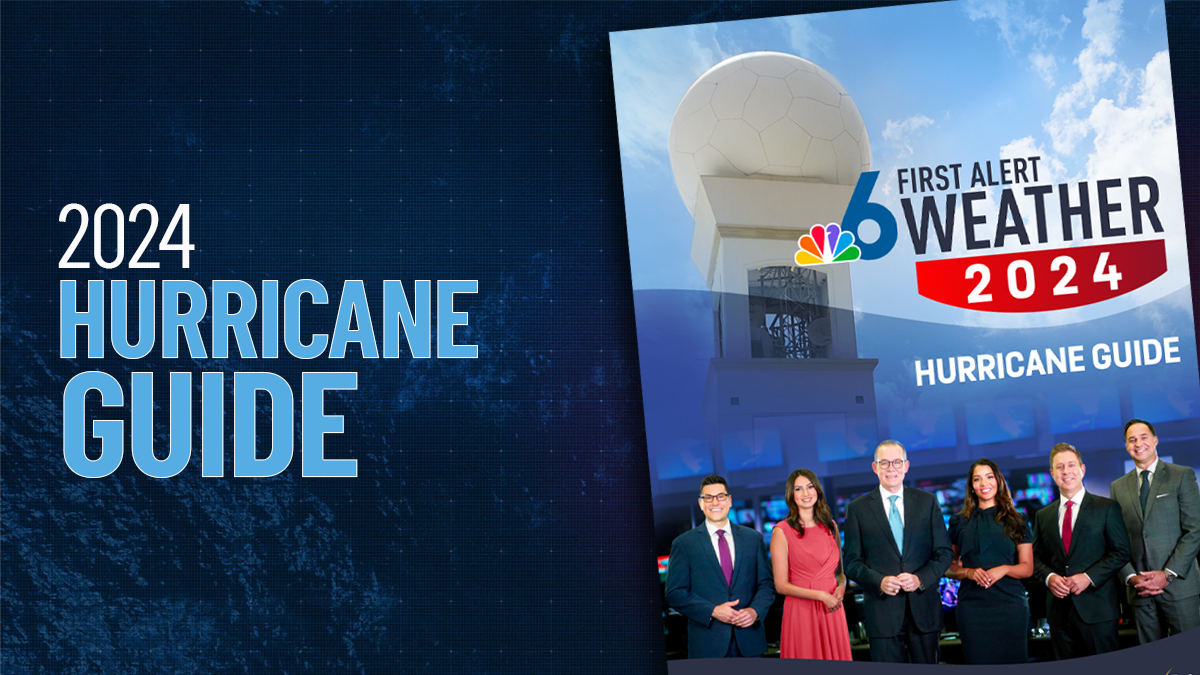A layer of dust and sand is headed across the Atlantic Ocean from Africa. Find out what that means for the United States.
Let me tell you a little more about our friend SAL.
If you follow the NBC 6 First Alert Weather team, you’ve surely heard a lot about Saharan dust in recent days. My colleague Adam Berg wrote about the phenomenon just a couple of weeks ago. The Saharan Air Layer (SAL) has played a huge role in shutting down tropical activity across the Atlantic basin over the past few weeks.
Watch NBC6 free wherever you are
As it turns out, there's been a near-record amount of Saharan dust present in the Atlantic this month. We haven’t kept reliable records on SAL for that long (just back to 2002), but July 2024 now stands as having the second highest concentration of Saharan dust in the Main Development Region (MDR) of the Atlantic behind July 2018. Remember, the MDR is where the strongest hurricanes form. It’s where record breaking Beryl came from in late June.
Dust is made up of minute particles that only become visible when they gather in high concentrations. So, imagine how much dust is needed to have it weigh 180 million metric tons. That’s how much dust is estimated to be carried away from Africa towards the Atlantic each year!
Get local news you need to know to start your day with NBC 6's News Headlines newsletter.
The Sahara Desert is the main source of this dust. So is the Sahel region, which represents the transition from the desert in North Africa to the relatively wetter savannas and jungles of sub-Saharan Africa.
Hot air over the desert is buoyant and, aided by the trade winds, can lift and transport the dust. Dusty air is carried away from the African continent towards, for example, the Amazon, where nutrients in the dust help fertilize the rainforest. But it often heads straight west, across the MDR and into the Caribbean, Central America, Florida, and even Texas.
Because SAL is made up of extremely dry air that originates in one of the driest places on Earth, it contains about 50% less moisture than the typical tropical atmosphere. As you might imagine, fledgling disturbances are going to struggle in an environment that is so depleted of the typical amount of moisture found in the tropical belt.
Hurricane Season
The NBC 6 First Alert Weather team guides you through hurricane season
There are often strong winds aloft linked to SAL, as strong as 55 miles per hour between 7 and 14 thousand feet high. This increases the wind shear that often keeps tropical storms from gaining strength.
SAL warms the atmosphere too. All that hot and dusty desert air tends to settle around a mile high. When you have warm air sitting above the cooler air near the ocean surface, the atmosphere becomes quite stable, meaning not at all buoyant. You can’t have tropical depressions and storms forming in sinking air, and therefore SAL suppresses their development.
Clearly (or dustily, I guess), SAL is a good thing if we want less hurricanes. But dust outbreaks from Africa don’t last through the entire hurricane season. They typically wind down by mid-August, just in time for peak season. That’s not to say that there won’t be the occasional SAL around, but likely not as concentrated or widespread as it’s been this month.
Stay informed and prepared as we head into these busy months.



